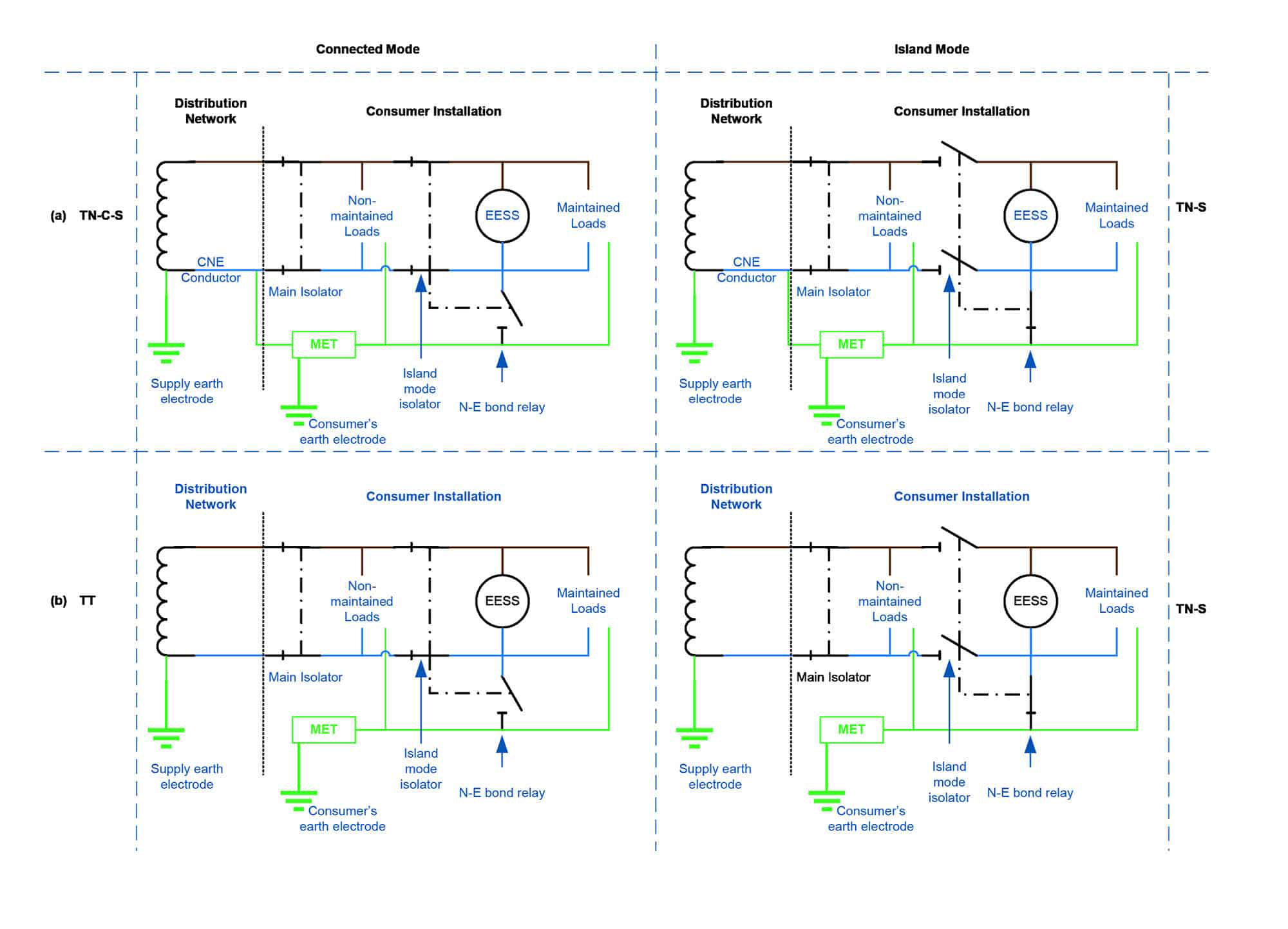Swwils wrote: ↑Mon Oct 17, 2022 9:44 am
Note the source of supply in the island mode and the earthing arrangement in that mode. It's TN-S. Please read the link.
Strictly speaking this is NOT TN-S, at least as far as the earth fault current path is concerned, which is all the matters.
With TN-S the earth fault current path is only via the distributor provided earth conductor, usually the cable sheath, that runs directly back to the local transformer earth. There is NO other earth fault current path with TN-S.
With TT, the earth fault current path is local, via the local earth electrode.
What the IET are suggesting is a hybrid earthing system whereby an additional TN-C-S/PME intermediate earth is provided at the consumer end. With TN-S there is NO earth electrode at the consumer end, the earthing system relies 100% on the integrity of the separate earth conductor provided by the distributor.
Whatever the hybrid system suggested is, it is definitely not TN-S (see the diagrams I posted from the OSG). Going right back to basics, The form of the abbreviation runs from the generator (left) to the consumer (right), so TN-S means Terra (earth) at the generator end, Neutral and earth are Separate, which means that the earth conductor is separate from all other conductors and there are no additional earth electrodes anywhere other than at the generator end (usually the distribution transformer). There is no local earth electrode at the consumer end with TN-S, if there was then there would need to be another T (for Terra, earth) at the right hand end of the abbreviation (as there is with TT).
My understanding is that the recommendation at the moment is to add an additional consumer earth electrode IF the supply is TN-C-S/PME. This adds a local intermediate earth that can provide an earth fault current path in the event that the distributor's earth is broken. This still falls within the TN-C-S/PME definition, as that earthing system uses several intermediate earth electrodes along the distribution route for redundancy (hence the word "Multiple" in PME) and a degree of fault tolerance. The regs changed a year or so ago to allow the use of a consumer intermediate earth electrode with TN-C-S, presumably as a precursor to more homes having a backup capable battery system.
This makes the supply TT at the consumer end when in island mode. The first T is the earth at the generator end, the second T is the consumers earth electrode that is added to provide a fault current path to earth locally.
25 off 250W Perlight solar panels, installed 2014, with a 6kW PowerOne inverter, about 6,000kWh/year generated
6 off Pylontech US3000C batteries, with a Sofar ME3000SP inverter
